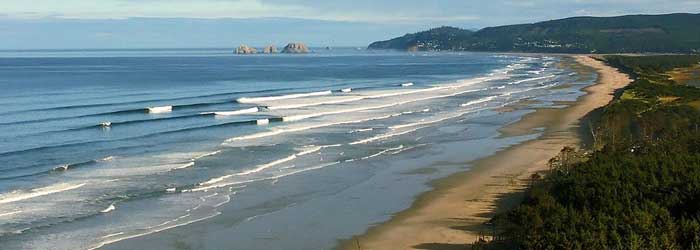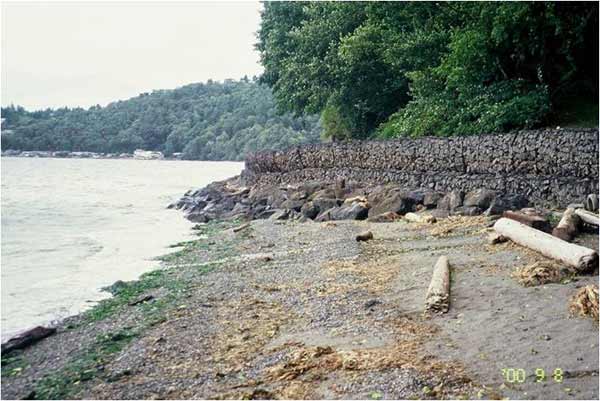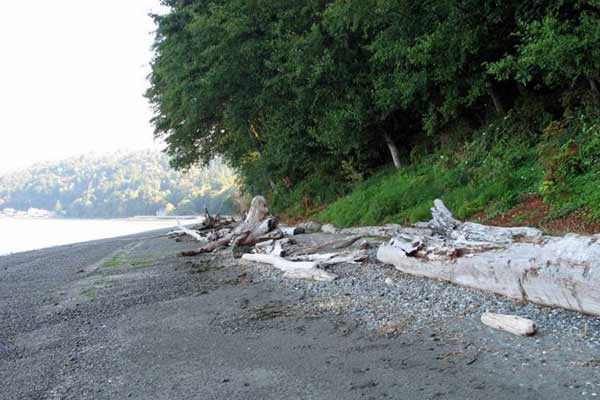Coastal Processes Shape our Coastline
A Dance of waves and sediments
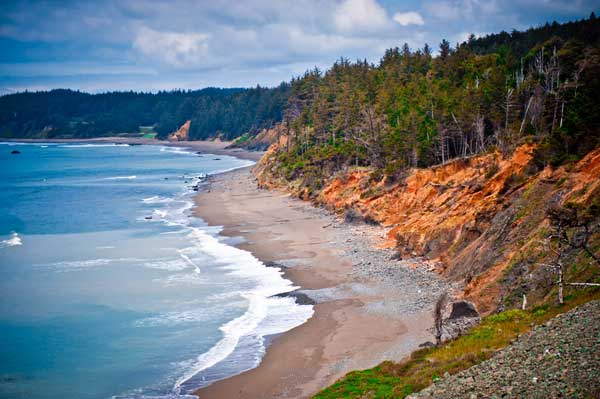
Photo by Chris Willis
Shaped by repeated glaciation, the shoreline of the Salish Sea boasts a rocky, irregular profile of steep coastal bluffs, banks, beaches, and spits.
A continual process of erosion and sediment transport shapes this dramatic junction of land and sea: Water moves soil and rocks down coastal slopes toward the shore. There, incessant waves erode vulnerable shorelines, washing soils from bluffs and rivers to replenish adjacent beaches and build spits.
Manmade shoreline modifications—such as unchecked stormwater runoff and improper shoreline armoring—interfere with nature’s erosion-and-deposition balancing act.
Maintaining functioning sediment pathways for shoreline sediments is essential to conserve beaches, fish spawning habitats, wildlife foraging, and coastal wetlands.
Coastal Processes
Our shorelines change - from season to season - and year to year.
Littoral drift

Illustration courtesy King County, Washington
Waves hit the shoreline at an angle, transporting sediment in a process called littoral drift. Sediments wash away from vulnerable areas—such as bluffs and stream deltas—and accumulate in calmer areas, replenishing beaches and forming marshes, spits, and barrier beaches.
Waves and sediment movement
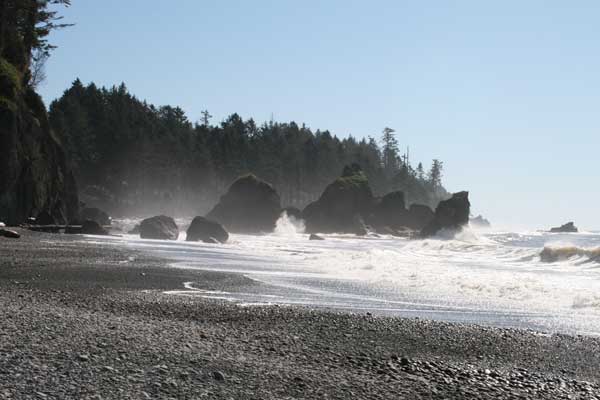
Photo by Hugh Shipman
Wind-driven waves and storm surge move beach sediment up and down the shore. Strong winter storm waves create gravelly, steeper beaches; gradual summer waves often result in sandier, broader beaches.
Feeder bluffs
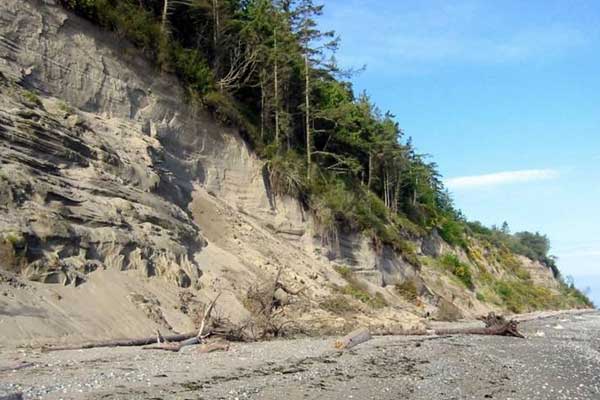
Photo by Hugh Shipman
Constant wave action gradually erodes beaches and the bases of coastal bluffs. This natural coastal process provides the sediment that renews adjacent shorelines.
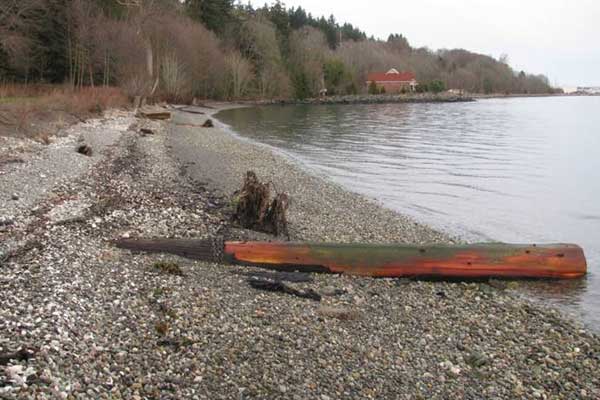
Photo by Hugh Shipman
Can you see it? See the large log on the beach? It's chained to an anchor deep in the sand, part of a natural beach restoration project by the Samish Indian Nation.

